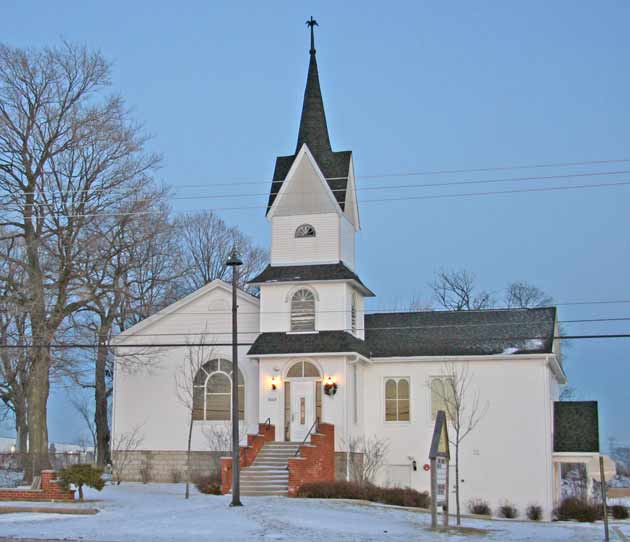“Belief consists in accepting the affirmations of the soul …” –Ralph Waldo Emerson
Organized religion played a major role in settling Illinois, and it continues to influence the culture of our region. We enjoy highlighting places of worship, one in the country and one in the city, in each issue.
Country Church

Est. 1835 • 3s437 Eola Road, Aurora/Naperville • (630) 898-0431
One of the first settlements formed in our region was Big Woods, in 1835, along Eola Road east of a massive grove of trees that extended from Batavia to Aurora. Here was formed the “Big Woods Claim Protecting Society,” the first of its kind in the county, to protect settlers from being pushed out by rich speculators, who often bought the land out from under them. The society also served as an arbitrating board in boundary disputes among settlers.
This section actually straddles the DuPage/Kane county line, and the Kane County area was originally known as “Little Woods.” It was Presbyterian affiliated. In 1835, a group of 14 met in the home of Thomson Paxton. The first church was built in 1839, through the joint efforts of the Congregational, Baptist and Methodist societies, who alternated use of it.
Big Woods was the last of three Congregationalist societies to form in the county, led by Paxton, a Scotch Irishman who had left Tennessee because of his opposition to slavery. The group withdrew to organize the Big Woods Congregational Church, whose building still stands on Eola Road. That group eventually moved and formed the Congregational Church of Batavia.
Even as the area lost the features for which is was named, encroached upon by concrete and power lines, the little church has endured. It was designated as a national historic site in 1979. Pastor Bill Rowe currently leads the congregation. Sunday worship 10 a.m.; Wednesday prayer service, 5 p.m.; Thursday gatherings 9 a.m. & 6 p.m. ❚
City Church

Est. 1894 • 1401 N. Richmond Road, McHenry • (815) 385-0024 • stmarymchenryil.org
Prior to 1894, German Catholics in McHenry were considered a mission parish of St. John the Baptist Church in Johnsburg, which was originally an exclusively German Catholic community that established its church in 1842. Missionaries passing through on their way to Johnsburg would stop to minister to Catholics in McHenry.
The first Mass was held by St. Mary’s first resident pastor, German-speaking Fr. Frederick Kirsch, in a an old school building in August 1894. Exactly four years later, in 1898, he offered Mass in a new church, which is still used by the parish today. A parish school was administered by the Sisters of St. Francis.
In 1917, a fire damaged the church and destroyed the rectory. The church was repaired, but the parish made due without a rectory until 1921, when Fr. Charles Nix began his 39 years of service at St. Mary and had it replaced. In 1937, he built a new school that also educated students from St. Patrick’s parish, until 1951, when St. Patrick members built their own school. In 1956, growing enrollment at St. Mary called for the addition of four classrooms and a gym.
To mark the 60th anniversary of its founding, in 1969, the parish renovated the church and St. Mary Chapel in the basement. In 1970, St. Mary and St. Patrick schools combined to become Montini Primary Center and Montini Middle School. In 1989, the Church of Holy Apostles School consolidated with St. Mary and St. Patrick. The rectory was refurbished in 1995.
Today’s active membership of 680 families is led by Fr. Robert Balog, pastor. Confession is heard at 3 p.m. Saturday. Mass is held Tuesday at 9 a.m.; Wednesday through Friday at 8 a.m.; Saturday at 4 p.m.; Sunday at 7, 9 & 11 a.m.; and on Holy Days at 8 & 10 a.m. & 7 p.m. ❚




















































